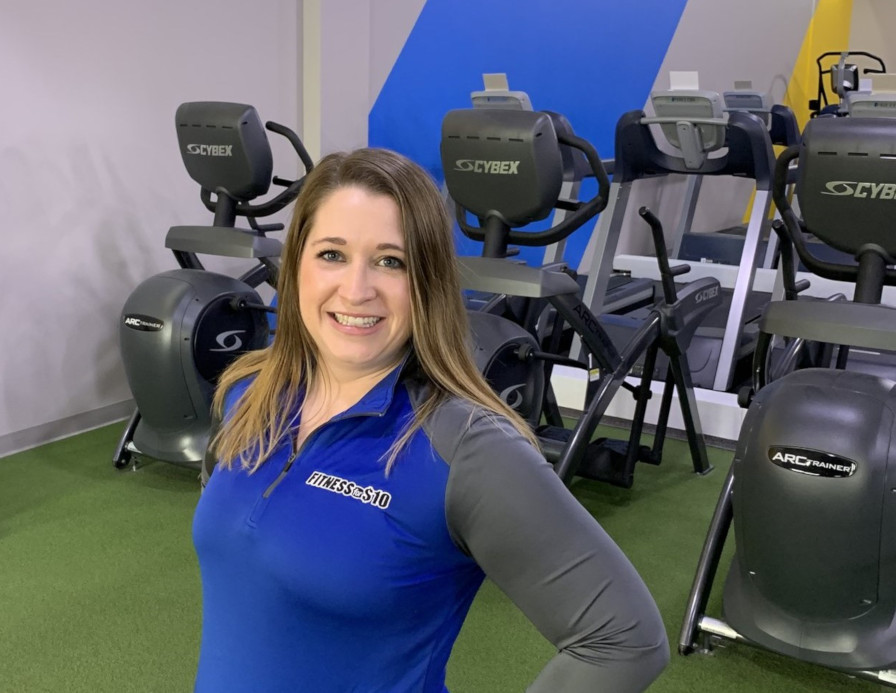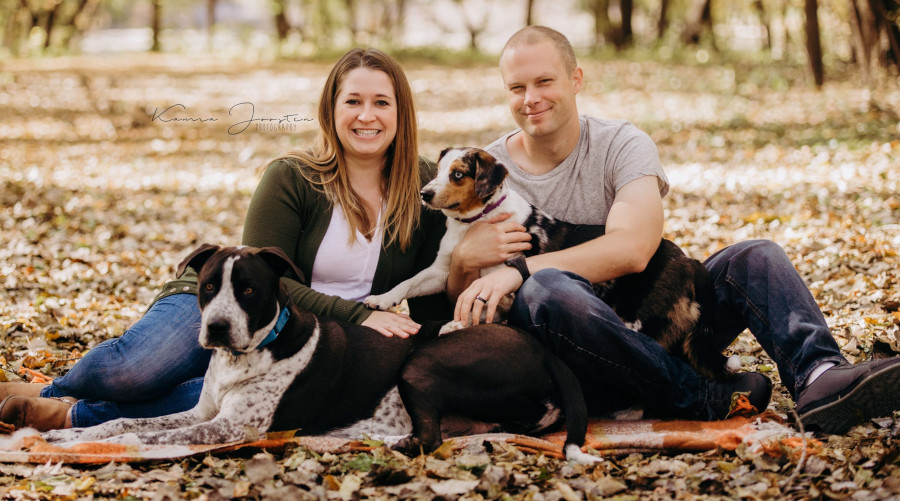With Happy Feet, Beckie Swanson Pursued Her Passion
February 9, 2021

Our feet take us where we want to go. Beckie Swanson learned how true this is when foot pain stood in the way of a career in fitness and an active lifestyle outside the gym.
About 10 minutes into teaching her ZUMBA class at Fitness for $10 in Mankato, Beckie Swanson’s right foot hurt. With deep pain in her arch, she was uncomfortable throughout her class.
After jamming her big toe a few years back, she saw Dr. James Nack at the Mankato Clinic Foot and Ankle Center. During that visit, she learned she had a bunion that could be removed. A bunion is a bony bump that forms on the joint at the base of the big toe. She was hesitant at first and put off the surgery.
“My long term goal was to work full time as a fitness instructor. As long as I kept putting off the surgery, I was putting off my goals and passion,” Beckie said. “Take care of your body. That’s what I tell other people to do. I needed to listen to my own advice.”
A lifelong dancer who also skated on the Mankato Area Roller Derby team, Beckie hasn’t always been kind to her feet. In August 2019, Dr. Nack performed her bunion surgery to remove the bunion, relieve pain and realign the joint at the base of the big toe. She is so happy she did it!
Today Beckie is the Member Experience Manager at Fitness for $10. As a certified Les Mills instructor, she teaches a variety of classes as well as spin and Zumba at the gym.
“Teaching classes is enjoyable again. It’s nice to be able to walk normally again and teach a class without pain,” Beckie said.
Beckie was also experiencing knee pain. Dr. Nack explained how the bunion can affect other parts of her body. As the pain moved up the back of her leg, she compensated by walking on the side of her foot instead of rolling off her heel onto her toes.
“A bunion is a joint that’s becoming out of alignment. When your car’s out of alignment, you’re not going to go that far down the road,” said Dr. Nack. “Beckie’s young. She’s very healthy. She’s very active. You want to get the foot in better alignment sooner rather than later. You want to be proactive.”
Bunions can be caused by heredity due to the shape and structure of the foot, foot stress or injuries. Let’s face it, our feet take a beating. We also know that poorly fitting shoes particularly those with a pointed toe that forces the toes into an unnatural position help bunions develop and worsen.
Outside of the gym, Beckie runs, plays sports, hunts and enjoys the outdoors. When the gym was shut down due to COVID-19, Beckie offered virtual Zumba classes via Zoom. With two dogs to walk, she logged many miles and discovered new trails in the area.
A lifelong dancer, Beckie and her husband enjoy swing dancing together, especially the Lindy Hop which is a little faster than traditional swing dancing. “I wanted to keep dancing because I love it!”

Surgery and recovery
When Dr. Nack examined and x-rayed Beckie’s foot, he recommended a less complex bunion surgery which would allow her to bear weight on the foot more quickly after surgery. In a non-weight bearing bunion surgery, the patient is casted and uses crutches or a scooter throughout recovery.
Beckie said her surgery went awesome. She felt very prepared for the recovery because Dr. Nack told her exactly what to expect and mapped out a plan from day 1 to 84 of her recovery. Bones take 6-8 weeks to heal. That’s why Dr. Nack follows his patients weekly for 2 months after bunion surgery.
“If there are no surprises along the way, people do much better,” Dr. Nack said.
Beckie followed up with Dr. Nack at 3-5 days from surgery. At 2 weeks, she returned to get her stitches removed. She stayed off her foot for the first 1-2 weeks, using crutches for about a week. She wore a boot to protect the toe and keep the foot in the right position. After 4 weeks wearing the boot, it was very exciting when she was released from the boot and into athletic shoes! Dr. Nack praised Beckie for closely following the post-operative plan for a great outcome.
As prescribed, Beckie iced and elevated. Later she followed through with at-home exercises. She picked up marbles with her toes to strengthen her arch, drew the alphabet in the air with her big toe and ankles, and stretched the Achilles tendon. Dr. Nack even taught Beckie how to shop for shoes! She looks for shoes that have a stiff sole and don’t bend too much in the middle. She opts for good support in both her sneakers and street shoes. When it comes to heels, wedges are the way to go.
What’s Beckie’s advice to others? “Listen to your body. Don’t try to push through the pain. Do what’s right for you.”

Expert Advice from Dr. James Nack
Bunion surgery is an elective procedure. Patients usually come to me when the bunion begins to cause pain and they notice redness, tenderness and swelling. They may also have decreased motion in the big toe. While surgery is the only way to correct the bunion, I also encourage conservative care. Here is a conservative care approach to reduce pain and slow the progression of bunions.
- Wear custom foot orthotics prescribed by a podiatrist. Evidence shows orthotics decrease foot pain and improve function.
- Wear good, supportive shoes with plenty of room in the toes. Do not wear narrow, pointed shoes that pinch or force the toe into an unnatural position. Ditch the flip flops too!
- Do not wear heels more than 2 inches in height.
- Stretch the Achilles tendon for 10-12 minutes.
- Strengthen the muscles of the arch. Try picking up 20 marbles with your toes and placing in a bowl. Use one foot to pick up all the marbles. Repeat with the other foot.
I recommend this same conservative care after bunion surgery as well. It’s so important to protect and take care of our feet!
Bunion surgery can benefit people who have significant pain that limits everyday activities and walking as well as chronic swelling of the big toe joint. A big toe that’s drifting toward the smaller toe is also a sign that you could benefit from surgery.
Learn more about our services and providers in the Mankato Clinic Foot and Ankle Center.